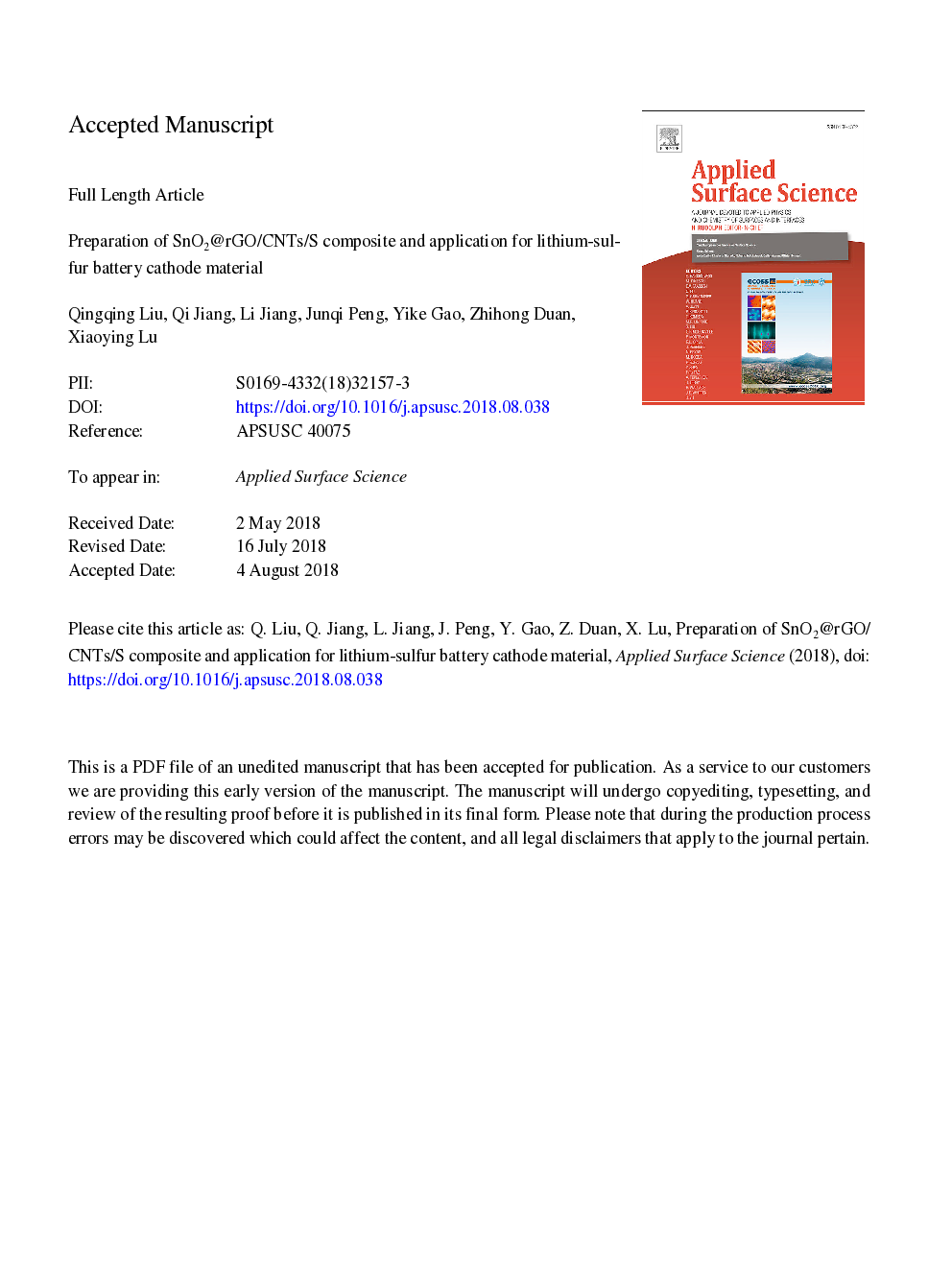| Article ID | Journal | Published Year | Pages | File Type |
|---|---|---|---|---|
| 11006457 | Applied Surface Science | 2018 | 14 Pages |
Abstract
In this paper, SnO2 was introduced in to suppress the “shuttle effect” of lithium-sulfur battery for its efficient adsorption for lithium polysulfides, and a three-dimensional conductive network constructed by reduced graphene oxide (rGO) and carbon nanotubes (CNTs) was used to improve the composite conductivity and mechanical properties. Thus, a SnO2@rGO/CNTs/S composite was prepared to use as the lithium-sulfur battery cathode material. The obtained samples were characterized by X-ray diffraction, scanning electron microscopy, energy dispersive X-ray spectroscopy, high-resolution transmission electron microscopy and thermogravimetric analysis. The electrochemical performance was characterized by cyclic voltammogram, constant current chargeâdischarge, rate performance, cycle life and electrochemical impedance spectroscopy after being assembled into lithium-sulfur battery. The results show that the obtained composite has a promising electrochemical performance: the initial discharge capacity is 1205.4â¯mAhâ¯gâ1 at 0.1C and there is a reversible capacity of 958.6â¯mAhâ¯gâ1 after 50 cycles.
Related Topics
Physical Sciences and Engineering
Chemistry
Physical and Theoretical Chemistry
Authors
Qingqing Liu, Qi Jiang, Li Jiang, Junqi Peng, Yike Gao, Zhihong Duan, Xiaoying Lu,
